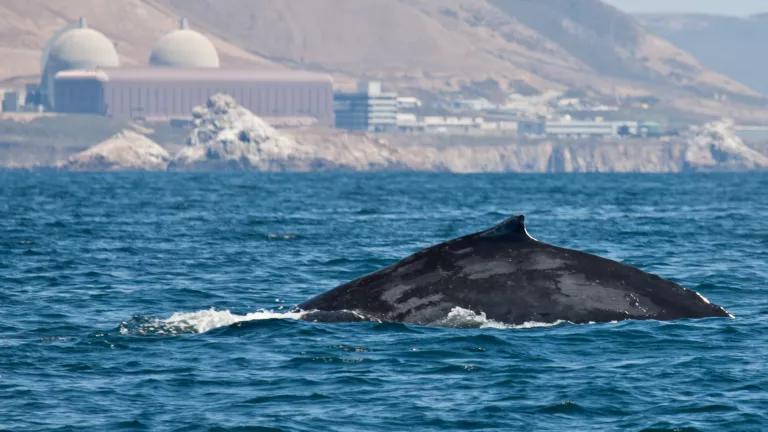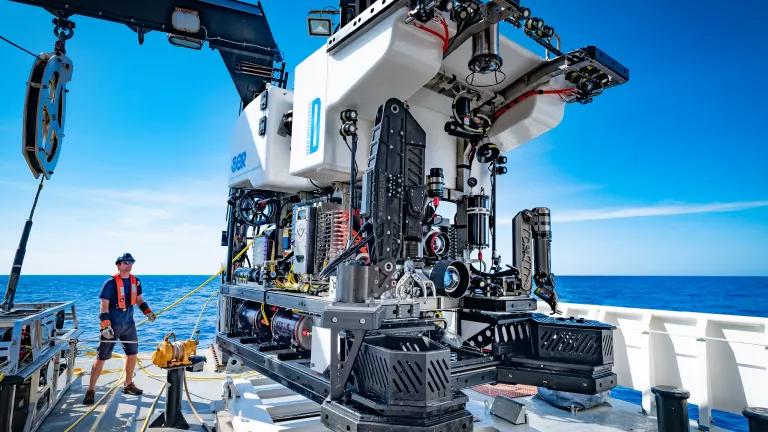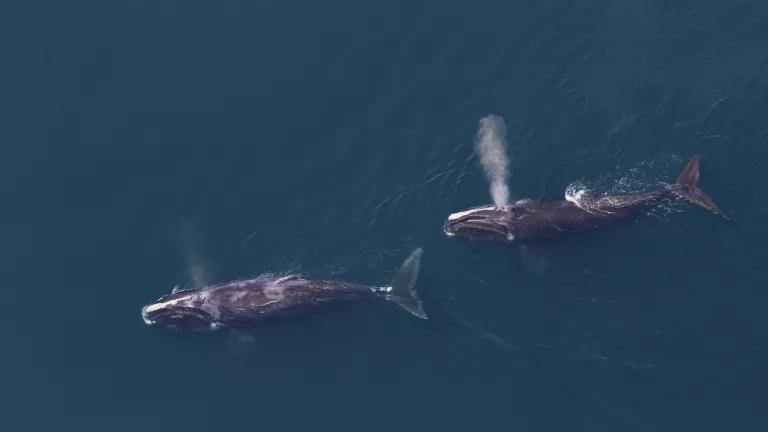
The California State Lands Commission is scheduled next week to consider a joint proposal from Pacific Gas & Electric, NRDC, Friends of the Earth, and others to begin an orderly closure of the giant Diablo Canyon Nuclear Power Plant, located along California’s majestic central coast that also is home to abundant and unique sea life, marine plants, and animals.
At issue for the State Lands Commission on Tuesday (June 28) is whether to grant a six-year extension of PG&E’s subtidal leases—the permits that allow the utility to draw in billions of gallons of ocean water daily to keep the plant’s two reactors cool—to cover the time between their scheduled expiration in 2018 and 2019 and the beginning of the decommissioning process that would begin in 2024 under the proposal.
These lease extensions would align PG&E’s permission to operate the plant’s ocean-water cooling system with the utility’s operating licenses from the Nuclear Regulatory Commission (NRC), which expire in 2024 and 2025. Under the Joint Proposal, PG&E would withdraw its license renewal request to the NRC—which, if granted, would allow the utility to operate the plant for an additional 20 years, until 2044—and begin the process of shutting down the nuclear facility, bringing California’s era of nuclear power generation to an end. The plant’s electricity generation would be replaced by 100 percent zero-emissions energy resources, led by energy efficiency and wind and solar power, within nine years.
NRDC advocated last December that the States Lands Commission defer its decision on PG&E’s request to extend its subtidal leases until the commission could determine the appropriate level of review required under the California Environmental Quality Act (CEQA). But the Joint Proposal is a game changer. By committing to close the Diablo Canyon facility completely, PG&E will end the plant’s harm to the ocean environment—and remove other environmental impacts associated with the plant, as well.
Even though the plant will stop generating power in 2025, PG&E will need to submit a new and separate subtidal lease application to the commission to allow use of the ocean-water intake and discharge structures for the period of time necessary to accommodate decommissioning activities. NRDC and PG&E expect the entire decommissioning process to be subject to full review under CEQA, which will allow for additional mitigation to address environmental impacts associated with shutting down and dismantling the plant.
The plant’s closure will be a boon for marine life
Closing the Diablo Canyon nuclear facility would finally end decades of harm to marine life in the region where the plant operates. The plant’s intake pipes draw in more than 2.5 billion gallons of water per day, or 2.8 million acre-feet annually. This large and continuous seawater withdrawal is estimated to kill roughly 1.5 billion fish in early life stages each year, as creatures are sucked into the cooling systems or become impinged against the screens on the open-water pipes. The cooling water is also discharged back into the ocean water at a warmer temperature, which can cause additional harm to fish and other marine life in the area.
Moreover, Diablo Canyon’s open-ocean intake is located less than one mile from the Point Buchon State Marine Reserve and the adjacent Point Buchon State Marine Conservation Area, which together protect an ecologically diverse seascape and provide a home to more than 700 species of invertebrates, as well as 120 fish species, marine plants, seabirds, and marine mammals. This “MPA (marine protected area) cluster” is important in its own right, as well as being an important part of an ecologically connected network that runs along the coast of California. While Diablo Canyon’s intake is not directly within the MPA cluster, the area of source water being drawn into the plant likely overlaps with the MPA boundaries and has the potential to withdraw marine life out of the protected area. NRDC was a leader in the effort to design and secure California’s landmark system of marine protected areas, and we remain deeply committed to ensuring the integrity of the network the marine species and habitats it shelters.
Other power plants in California that use “once-through-cooling” (OTC) technology have similar impacts on the ocean, although Diablo Canyon and the recently closed San Onofre Nuclear Generating Station near San Diego have been responsible for the largest ocean water withdrawals in the state. The Diablo Canyon Nuclear Power Plant is now the largest of the remaining once-through-cooling facilities, accounting for nearly 80 percent of all OTC ocean withdrawals in California.
Because of the significant impacts of OTC, NRDC has played a central role in advocating that California phase out the destructive practice altogether. Most notably, we have been deeply involved in the drafting, passage, and implementation of the State Water Board’s 2010 Once-Through-Cooling (OTC) Policy, which seeks to reduce the extreme impacts of power plant OTC systems on marine life and habitats. The policy directs plants to reduce their ocean intake flow rates by roughly 93 percent. For the Diablo Canyon facility to come into compliance, PG&E would have had to build close-cycle cooling towers by the end of 2024, which would have cost billions. But under the Joint Proposal, once PG&E begins decommissioning the Diablo Canyon facility, it will reduce its water intake rates—and thus its impacts on marine life—even more than it would be required to do under the OTC Policy. And ultimately, upon complete shutdown, it will cease its ocean water intakes and the associated impacts altogether.
California’s iconic ocean habitats and their marine species are of immense ecological, economic, and cultural value, within California and beyond. For three decades, the Diablo Canyon Nuclear Power Plant has had a significant impact on the marine life in the region of the plant and the once-pristine bay where it is located. Removing this impact to California’s treasured marine wildlife and coastal habitats—and replacing it with clean energy—is something all Californians can celebrate.



